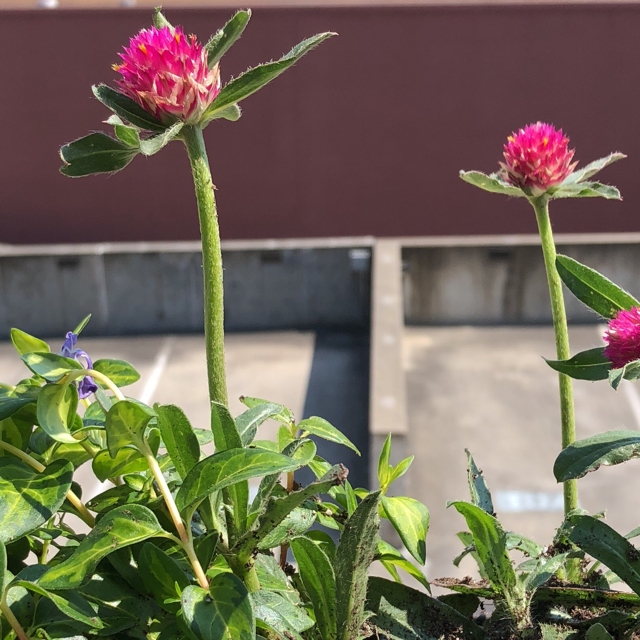Globe Amaranth (Gomphrena globosa)
Description
Gomphrena globosa, commonly known as globe amaranth, makhmali, and vadamalli, is an edible plant from the family Amaranthaceae. The round-shaped flower inflorescences are a visually dominant feature and cultivars have been propagated to exhibit shades of magenta, purple, red, orange, white, pink, and lilac. Within the flowerheads, the true flowers are small and inconspicuous. G. globosa is native to Central America including regions of Brazil, Panama, and Guatemala, but is now grown globally. As a tropical annual plant, G. globosa blooms continuously throughout summer and early fall. It is very heat tolerant and fairly drought resistant, but grows best in full sun and regular moisture. The plant fixes carbon through the C4 pathway. At maturity, the flowerheads are approximately 4 cm long and the plant grows up to 24 inches in height. G. globosa is an outcrossing species that is pollinated by butterflies, bees, and other insects. Floral volatiles likely play a significant role in the reproductive success of the plant by promoting the attraction of pollinators. In Hawaii, it is commonly used in long-lasting leis since it retains its shape and color after drying. In Nepal, the flower is used to make a garland during Bhai Tika, last day of Tihar. The garland is put around the brother's neck by their sister for protection.
Taxonomic tree
-
Domain: Eukarya
-
-
Kingdom: Plantae
-
-
Phylum: Magnoliophyta
-
-
Class: Magnoliopsida
-
-
Order: Caryophyllales
-
-
Family: Amaranthaceae
-
-
Genus: Gomphrena
-
-
-
-
-
-







































































